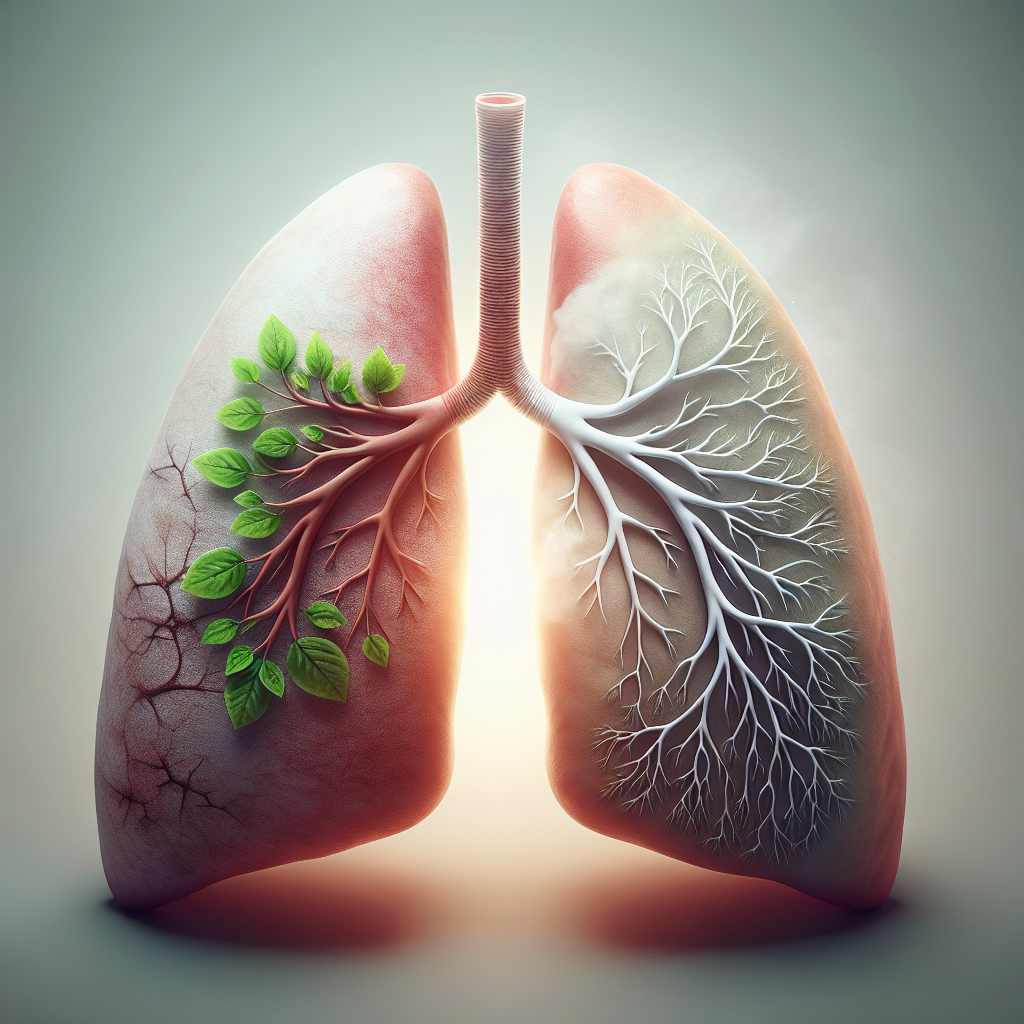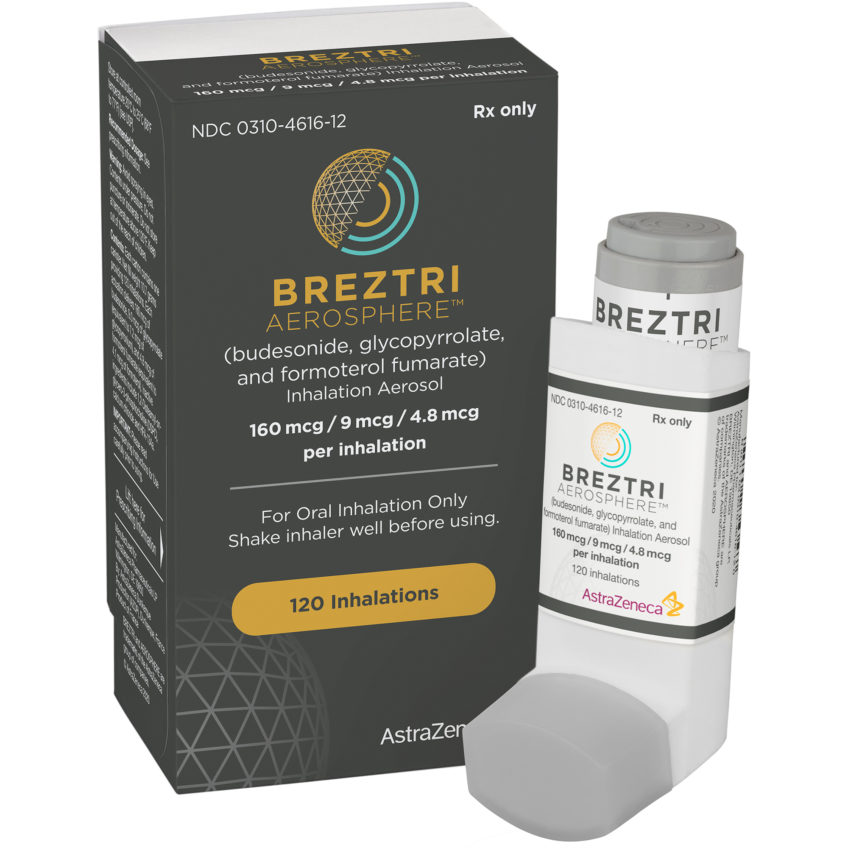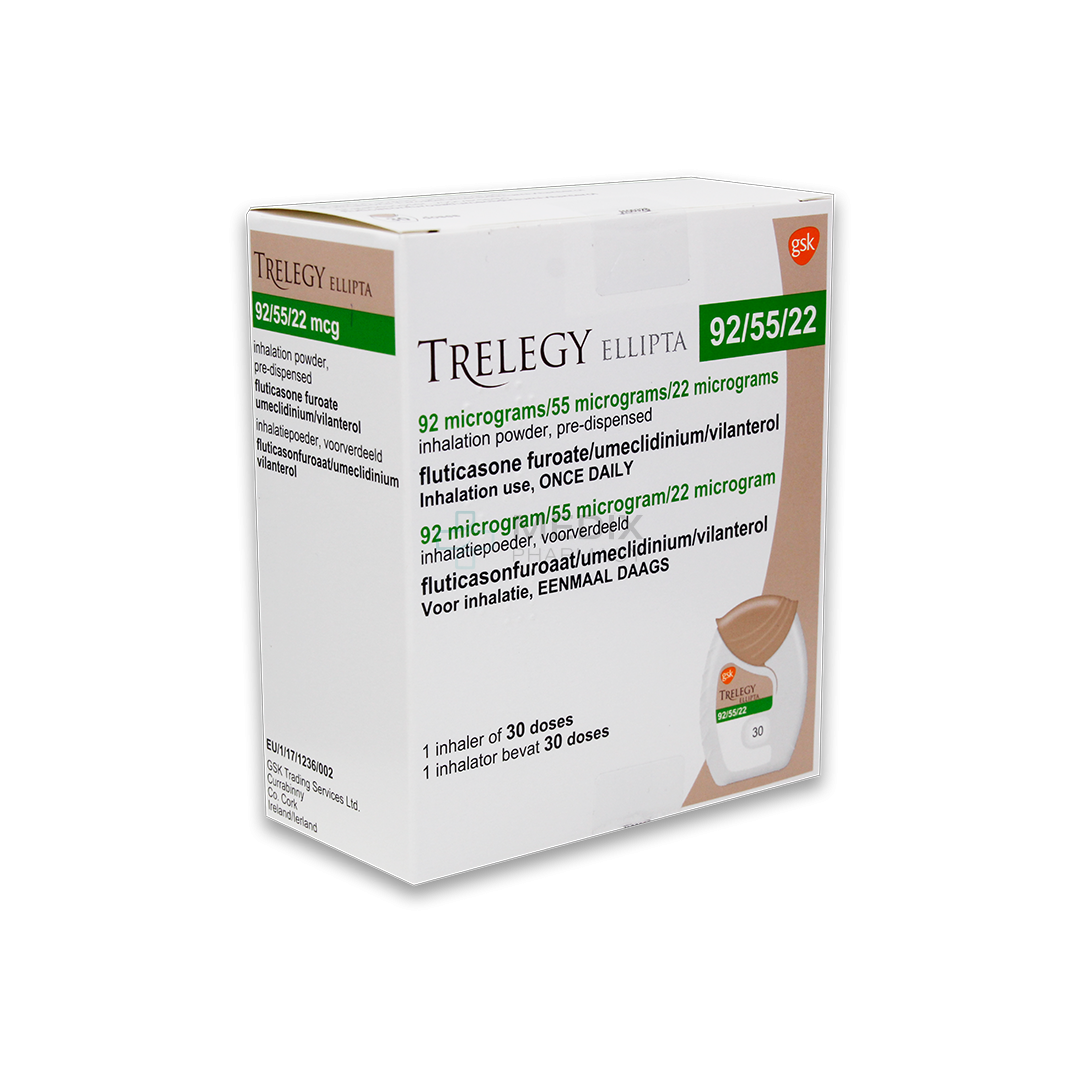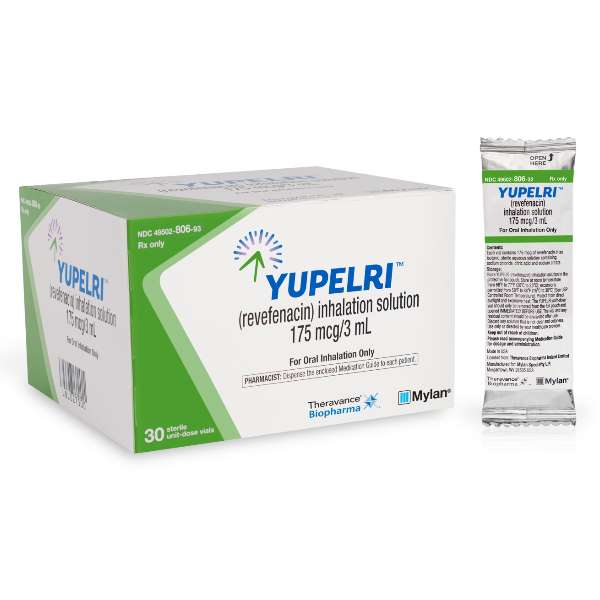New Chronic Obstructive Pulmonary Disease treatments 2024
New Chronic Obstructive Pulmonary Disease Treatments 2024
Chronic Obstructive Pulmonary Disease (COPD) is a progressive lung disease that is characterized by increasing breathlessness, frequent coughing, wheezing, and tightness in the chest. It encompasses two main conditions—emphysema and chronic bronchitis—both of which involve obstruction to the airflow into and out of the lungs. The primary cause of COPD is long-term exposure to substances that irritate and damage the lungs, most commonly cigarette smoke, including secondhand smoke, as well as air pollution, chemical fumes, and dust. Symptoms of COPD often don't appear until significant lung damage has occurred, and they usually worsen over time, particularly if smoking exposure continues. Early diagnosis and management are crucial to slow the progression of the disease and maintain a good quality of life.
When considering treatment options for COPD, it is important for patients to consult with their healthcare providers to determine the most appropriate medications based on the severity of their condition, symptoms, and overall health. Bronchodilators are commonly prescribed to relax the muscles around the airways, making breathing easier, and come in short-acting and long-acting forms. Inhaled steroids can help reduce airway inflammation for some individuals. For those with more advanced stages of COPD, combination inhalers that contain both a bronchodilator and a steroid may be recommended. Additionally, pulmonary rehabilitation, oxygen therapy, and lifestyle changes such as quitting smoking and engaging in regular physical activity are integral parts of managing COPD effectively.

Treatment options
| Treatment option | Estimated cost | Efficacy | Eligibility |
|---|---|---|---|
| Bronchodilators | $30 - $100 | Relieves symptoms | Most COPD patients |
| Inhaled Steroids | $200 - $300 | Reduces inflammation | Patients with frequent exacerbations |
| Combination Inhalers | $100 - $400 | Improves lung function | Patients needing multiple medications |
| Oxygen Therapy | $100 - $200 | Improves survival | Patients with severe COPD |
| Pulmonary Rehabilitation | $20 - $50 per session | Improves quality of life | Most COPD patients |
| Surgery | $10,000 - $50,000 | Varies by procedure | Patients with severe COPD |
| Breztri Aerosphere | $400 - $500 | Improves lung function | Patients with COPD |
| Trelegy Ellipta | $500 - $600 | Reduces exacerbations | Patients with COPD |
| Yupelri | $300 - $400 | Relieves symptoms | Patients with COPD |
| Experimental Treatments | Varies | Unknown | Patients eligible for clinical trials |
| Off-label Medications | Varies | Varies | Patients with specific indications |
Treatments options in detail
Pharmacological Treatments for Chronic Obstructive Pulmonary Disease (COPD)
The management of Chronic Obstructive Pulmonary Disease (COPD) typically involves a combination of pharmacological and non-pharmacological treatments. The most common pharmacological treatments include bronchodilators, which are medications that help relax the muscles of the airways to improve breathing. Short-acting bronchodilators such as albuterol are used for quick relief of symptoms, while long-acting bronchodilators, such as tiotropium, are used for ongoing maintenance to prevent and reduce symptoms.
Inhaled corticosteroids, like fluticasone, are often prescribed in combination with long-acting bronchodilators to reduce inflammation in the airways and prevent exacerbations in patients with a history of frequent exacerbations. Oral corticosteroids may be used for short periods to treat acute exacerbations of COPD but are not typically used for long-term management due to the risk of side effects.
Phosphodiesterase-4 inhibitors, such as roflumilast, may be added to the treatment regimen in cases of severe COPD with chronic bronchitis and a history of exacerbations. This medication helps to decrease inflammation and relax the airways.
Theophylline is an older medication that may be used as a second-line treatment. It works by relaxing the muscles in the lungs and decreasing the response of the airways to irritants.
Combination Inhalers
Combination inhalers that include both a long-acting bronchodilator and an inhaled corticosteroid are commonly used in COPD management. Fluticasone/salmeterol and budesonide/formoterol are examples of such combination inhalers.
Breztri Aerosphere (budesonide/glycopyrrolate/formoterol fumarate) is a triple-combination inhaler that has been approved for the maintenance treatment of COPD. This medication combines an inhaled corticosteroid, a long-acting muscarinic antagonist (LAMA), and a long-acting beta2-agonist (LABA) to address inflammation, airway constriction, and airflow obstruction.
Trelegy Ellipta (fluticasone furoate/umeclidinium/vilanterol) is another triple-combination inhaler approved for the maintenance treatment of COPD. It contains an inhaled corticosteroid, a LAMA, and a LABA, providing a comprehensive approach to managing airflow obstruction and inflammation.
Antibiotics and Vaccinations
Antibiotics may be prescribed during acute exacerbations of COPD if there is evidence of bacterial infection. Vaccinations, such as the annual flu vaccine and the pneumococcal vaccine, are also recommended to prevent respiratory infections that can exacerbate COPD.
Non-pharmacological Treatments
Non-pharmacological treatments play a crucial role in the management of COPD. Pulmonary rehabilitation, which includes patient education, exercise training, nutrition advice, and counseling, is recommended to improve the overall quality of life and functional status of patients with COPD. Oxygen therapy is indicated for patients with severe resting hypoxemia. Smoking cessation is the most critical intervention for all patients with COPD who smoke, as it is the only measure known to slow the progression of the disease.
Experimental Treatments
Experimental treatments for COPD are being explored in clinical trials and include stem cell therapies, gene therapies, and new anti-inflammatory drugs. While these treatments offer potential hope for the future, they are not yet approved by the FDA and are not part of standard treatment protocols.
Treatments Not Approved by the FDA
Treatments not approved by the FDA for COPD but used in some cases include certain anti-inflammatory supplements and herbal remedies. These treatments should be approached with caution, as their efficacy and safety profiles are not well-established in the context of COPD.
Long-Acting Muscarinic Antagonists (LAMAs)
LAMAs, such as tiotropium, are a class of bronchodilators that are often used as maintenance therapy in COPD. They work by blocking the action of acetylcholine on muscarinic receptors, leading to relaxation of the airway smooth muscles.
Long-Acting Beta2-Agonists (LABAs)
LABAs, such as salmeterol and formoterol, are bronchodilators that act on beta2-adrenergic receptors to relax the muscles in the airways, making it easier to breathe. These are typically used for long-term maintenance rather than immediate symptom relief.
Revefenacin (Yupelri)
Yupelri (revefenacin) is a once-daily nebulized LAMA approved for the maintenance treatment of patients with COPD. It provides an option for patients who may not be able to use inhalers effectively due to physical limitations or those who prefer nebulized therapy.
Considerations for Treatment Selection
The selection of treatment for COPD is individualized based on the severity of the disease, the frequency of exacerbations, the presence of comorbid conditions, and patient preference. It is important for patients to work closely with their healthcare provider to determine the most appropriate treatment plan for their specific situation.
Monitoring and Follow-Up
Regular monitoring and follow-up are essential to assess the effectiveness of the treatment regimen, to make necessary adjustments, and to manage any side effects. Spirometry is used to measure lung function and monitor disease progression. Patient-reported outcomes, such as symptom scores and quality of life assessments, are also important for evaluating treatment success.
Conclusion
In conclusion, the treatment of COPD involves a multifaceted approach that includes a variety of pharmacological options, non-pharmacological strategies, and, in some cases, experimental or non-FDA-approved treatments. The goal of treatment is to alleviate symptoms, improve quality of life, and reduce the frequency and severity of exacerbations. Ongoing research continues to explore new potential treatments for this chronic and progressive disease.
Symptoms
Chronic Cough
One of the most common symptoms of Chronic Obstructive Pulmonary Disease (COPD) is a chronic cough. This cough is persistent, lasting for a prolonged period, and is often described as 'smoker's cough'. It may be productive, meaning mucus or sputum is expelled, or it can be a dry cough with no sputum production.
Shortness of Breath (Dyspnea)
Shortness of breath, medically referred to as dyspnea, is a hallmark symptom of COPD. Initially, dyspnea may only occur during physical exertion but as the disease progresses, it can become present even at rest. Patients often report a feeling of being unable to breathe deeply or feeling winded after simple activities like walking short distances.
Increased Mucus Production
Increased mucus production is another common symptom of COPD. The mucus can be clear, white, yellow, or greenish in color and is often thicker than normal. This symptom can lead to a feeling of congestion in the chest and frequent clearing of the throat.
Wheezing
Wheezing is a high-pitched whistling sound that occurs during breathing, particularly on exhalation, and is caused by the narrowing of the airways in the lungs. It is a common symptom in individuals with COPD and can be heard without a stethoscope when severe.
Chest Tightness
Chest tightness, which may feel like a squeezing or pressure in the chest, is often reported by patients with COPD. This symptom can be particularly distressing and may be mistaken for heart-related conditions.
Frequent Respiratory Infections
Individuals with COPD are more susceptible to respiratory infections such as the common cold, influenza, and pneumonia. These infections can exacerbate symptoms and lead to further lung damage.
Fatigue
Fatigue is a common and debilitating symptom of COPD. It can be caused by the extra effort required to breathe, poor oxygenation, and the energy expended in coughing and clearing mucus. This fatigue often affects the ability to perform daily activities and can impact the overall quality of life.
Weight Loss and Muscle Wasting
Unintended weight loss and muscle wasting, also known as cachexia, can occur in the advanced stages of COPD. This can be due to increased energy expenditure from labored breathing and the body's inflammatory response to lung damage.
Swelling in Ankles, Feet, or Legs
As COPD progresses, it can lead to complications such as right-sided heart failure, also known as cor pulmonale. This condition can cause fluid retention and swelling in the ankles, feet, or legs.
Chronic Bronchitis and Emphysema
COPD encompasses two main conditions: chronic bronchitis and emphysema. Chronic bronchitis is characterized by a long-term productive cough, while emphysema involves damage to the air sacs (alveoli) in the lungs, leading to difficulty in air exchange. Both conditions contribute to the overall symptomatology of COPD.
Decreased Exercise Tolerance
Decreased exercise tolerance is commonly observed in COPD patients. Activities that were once easy can become difficult due to shortness of breath and fatigue. This can lead to a sedentary lifestyle, which may further decrease lung function over time.
Morning Headaches
Morning headaches can occur in COPD due to high levels of carbon dioxide in the blood, a condition known as hypercapnia. This can happen when the lungs are unable to effectively remove carbon dioxide, leading to its accumulation.
Hoarseness
Hoarseness or changes in the voice can be a symptom of COPD. This may be due to the effects of coughing, throat irritation from mucus, or the use of inhaled medications.
Barrel Chest
In some patients with emphysema, a barrel chest may develop. This is due to the over-inflation of the lungs, which causes the rib cage to stay partially expanded all the time.
Blue Lips or Fingernail Beds (Cyanosis)
Cyanosis, which is the bluish discoloration of the lips or fingernail beds, indicates low oxygen levels in the blood. This symptom is more common in the later stages of COPD and requires immediate medical attention.
Difficulty Sleeping
Difficulty sleeping can be a problem for those with COPD, often because of breathing difficulties, coughing, or low oxygen levels at night.
Episodes of Confusion or Memory Loss
In advanced COPD, episodes of confusion or memory loss can occur, likely due to decreased oxygen supply to the brain or the buildup of carbon dioxide in the blood.
Worsening of Symptoms
A sudden worsening of symptoms, known as an exacerbation, can occur due to respiratory infections, environmental pollutants, or other factors. Exacerbations can be severe and may require hospitalization.
Irregular Heartbeat
An irregular heartbeat or arrhythmia can be a complication of COPD, particularly in the advanced stages of the disease. This can be due to the strain on the heart caused by chronic low oxygen levels or the effects of medications used to treat COPD.
Changes in Mental Alertness
In severe cases of COPD, there may be changes in mental alertness or a decreased ability to think clearly. This can be a sign of dangerously low oxygen levels or high carbon dioxide levels and requires immediate medical intervention.
It is important to note that the severity and combination of symptoms can vary widely among individuals with COPD. Early diagnosis and management are crucial to slowing the progression of the disease and improving the quality of life for those affected.
Cure
Current Status of Chronic Obstructive Pulmonary Disease Cure
Chronic Obstructive Pulmonary Disease (COPD) is currently considered an incurable disease. The primary goal of COPD management is to control symptoms, reduce the frequency and severity of exacerbations, and improve overall health status and exercise tolerance. While there is no cure, treatments can help to manage the symptoms and slow the progression of the disease.
Pharmacological Interventions
Pharmacotherapy is a cornerstone in the management of COPD. Bronchodilators, including beta2-agonists and anticholinergics, are commonly used to relieve symptoms and improve lung function. Inhaled corticosteroids may be prescribed to reduce inflammation in the airways, particularly for patients with frequent exacerbations. Phosphodiesterase-4 inhibitors and mucolytics may also be used in specific cases. However, none of these medications can cure COPD; they are intended to alleviate symptoms and improve quality of life.
Oxygen Therapy
For individuals with severe COPD and low levels of oxygen in their blood, long-term oxygen therapy can be life-saving. Oxygen therapy can improve survival, reduce hospitalizations, and enhance the quality of life, but it does not cure the disease. It is a supportive treatment aimed at managing the symptoms and complications associated with chronic respiratory failure.
Pulmonary Rehabilitation
Pulmonary rehabilitation is a comprehensive intervention that includes patient education, exercise training, nutrition advice, and psychological support. This program is tailored to the individual needs of the patient and can lead to significant improvements in dyspnea (shortness of breath), exercise capacity, and health-related quality of life. While pulmonary rehabilitation has many benefits for COPD patients, it is not a cure but a method to optimize the patient's functional status.
Surgical and Interventional Procedures
In selected patients with specific types of COPD, surgical interventions such as lung volume reduction surgery or lung transplantation may be considered. Lung volume reduction surgery involves removing diseased lung tissue, which can improve breathing and quality of life for certain patients with emphysema, a form of COPD. Lung transplantation can be a life-extending option for those with advanced disease. However, these procedures are high-risk, have significant potential complications, and are not suitable for all patients. They are not cures but can improve symptoms and potentially prolong life in selected cases.
Smoking Cessation
Smoking cessation is the most effective intervention to slow the progression of COPD. Quitting smoking can reduce respiratory symptoms and improve lung function decline rates. While it cannot reverse the damage already done to the lungs, it is the closest intervention to a 'cure' in that it can prevent further damage and exacerbations.
Vaccinations
Preventive measures such as vaccinations against influenza and pneumococcal pneumonia are recommended for patients with COPD. These vaccines do not cure COPD but can prevent infections that could lead to serious COPD exacerbations and further lung damage.
Research and Future Directions
Research into COPD treatments is ongoing, with a focus on understanding the pathogenesis of the disease and finding new therapeutic targets. Anti-inflammatory agents, antioxidants, and novel bronchodilators are among the areas of interest. Gene therapy and regenerative medicine, including stem cell therapy, are exciting fields of research that may one day offer the potential to repair lung tissue damaged by COPD. However, these are still in experimental stages and are not currently available as treatments.
Conclusion
While there is no cure for COPD, a combination of lifestyle changes, medications, oxygen therapy, pulmonary rehabilitation, and surgical options can manage the disease and improve the quality of life for those affected. Ongoing research continues to explore new avenues for treatment, with the hope of finding more effective ways to treat, and potentially cure, COPD in the future.
Access Chronic Obstructive Pulmonary Disease medicines today
If Chronic Obstructive Pulmonary Disease medicines are not approved or available in your country (e.g. due to supply issues), you can access them via Everyone.org.
How Everyone.org works

Make an enquiry
Choose the medicine you want to access, answer a couple of questions, and upload your prescription to speed things up. We’ll get back to you within 24 hours.


Make an enquiry
Choose the medicine you want to access, answer a couple of questions, and upload your prescription to speed things up. We’ll get back to you within 24 hours.


Breeze through the paperwork
We'll guide you through the required documents for importing unapproved medicine, ensuring you have all the necessary information.


Get a personalized quote
We’ll prepare a quote for you, including medicine costs and any shipping, administrative, or import fees that may apply.


Receive your medicine
Accept the quote and we’ll handle the rest - sourcing and safely delivering your medicine.

Some text on this page has been automatically generated. Speak to your physician before you start a new treatment or medication.
Let's talk
If you have any questions, call us or send us a message through WhatsApp or email:
Contact us





